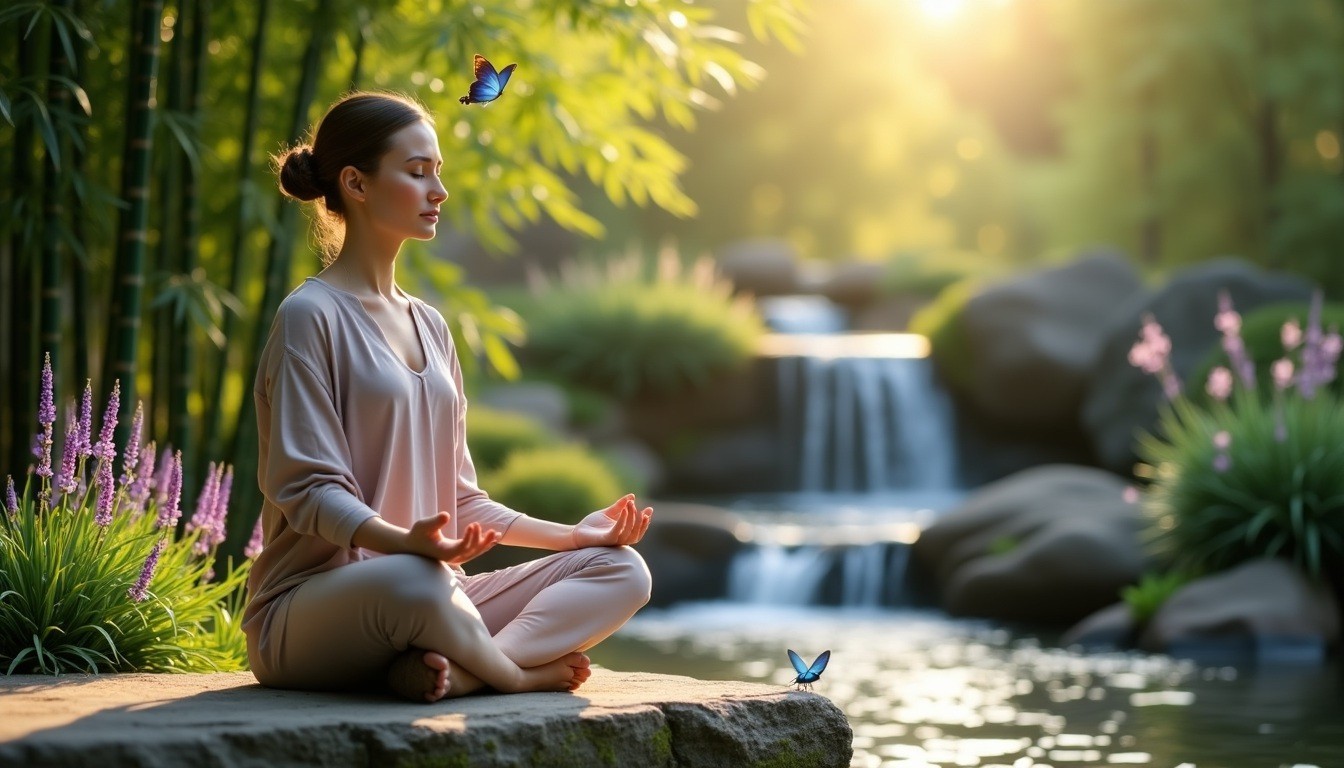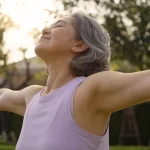

People today face endless tasks, deadlines, and digital distractions that make stress a constant companion for millions worldwide. A little stress can motivate us, but chronic stress often causes serious physical and mental health issues.
Natural stress relief methods are a great way to get long-term mental wellness benefits. These techniques align with your body’s natural systems and provide relief without relying on medications or costly treatments.
This piece outlines five proven techniques to reduce stress naturally. You will find practical ways to create a more relaxed and balanced life through mindful breathing exercises and nature-based practices. These simple methods can help you start feeling better today.
Your body deals with stress using a sophisticated biological system that handles both immediate and long-term challenges. Learning how this response works is vital to reduce stress naturally. Here are few supplements that you can use for stress relief
The body activates two key systems when you face a stressful situation. The rapid-acting sympathetic-adreno-medular (SAM) axis kicks in first and triggers your “fight-or-flight” response. The slower hypothalamic-pituitary-adrenal (HPA) axis releases cortisol into your bloodstream [1]. This two-system approach explains why you feel some stress effects right away while others build up over time.
Your body sends stress signals through physical and emotional channels. The physical signs you might notice are:
Stress can show up emotionally as irritability, anxiety, or feeling overwhelmed. Scientists found that 40-60% of the stress hormone CRH attaches to specific brain proteins that directly affect your emotional responses [1].
Natural stress relief targets your body’s built-in relaxation systems. Research shows your cortisol levels drop by a lot after just 20 minutes in nature [3]. This explains why outdoor activities work so well for managing stress.
Your body’s stress response system has a natural “brake” called the parasympathetic nervous system that promotes “rest and digest” [1]. Deep breathing or mindful movement activates this system and fights stress hormones to restore balance.
Scientists discovered that long-term stress can change your brain’s structure, mainly in areas that control memory and emotions [4]. The good news is that your brain’s natural adaptability means you can alleviate these effects with regular stress management. This knowledge led scientists to develop several proven approaches to natural stress relief, which we’ll explore next.
Breathing exercises are one of the easiest ways to relieve stress – you don’t need any special equipment or training. These simple techniques work with your body’s natural stress response system to create a sense of calm and balance.
The 4-7-8 breathing technique has its roots in ancient yogic practices and gives you a clear path to stress relief. You breathe in for 4 seconds, hold your breath for 7 seconds, and breathe out for 8 seconds [5]. Research shows this pattern can lower your heart rate and blood pressure, which helps you relax [6].
Here’s how to do it right:
Navy SEALs and other high-performance professionals use box breathing, also called square breathing. This simple four-part pattern triggers your body’s natural relaxation response [7].
Here’s the pattern:
Studies show that people who keep taking box breathing exercises can reduce their cortisol levels and possibly lower their blood pressure [7].
Progressive muscle relaxation (PMR) combines breathing with muscle tension and release. This technique helps you spot and release physical tension while staying aware of your breath [1].
The basic pattern is simple – tense each muscle group for 5 seconds as you breathe in, then release for 10-20 seconds as you breathe out [1]. This works really well especially when you have tension in specific areas like your neck or shoulders.
You’ll get the best results by spending 15-20 minutes in a quiet place wearing comfortable clothes [1]. Regular practice helps you become more aware of your body and makes it easier to release tension throughout your day.
Research continues to back up what many of us already know: nature helps relieve stress. Studies show that spending just 120 minutes each week in natural settings substantially improves our health and well-being [4].
Forest bathing (Shinrin-yoku), which emerged in Japan during the 1980s, has become the life-blood of preventive healthcare [8]. This practice lets you experience the forest atmosphere through all your senses. Research shows these key benefits:
Research proves that short walks in natural environments lead to positive thoughts and improved attention compared to city settings [8].
Grounding, also called earthing, helps your nervous system return to its natural, optimal state [2]. You need direct physical contact with the earth’s surface for 20- 30 minutes each day [8].
The simple process to ground yourself outdoors includes:
Studies link grounding to quicker recovery from illness, less inflammation, and relief from chronic pain [2]. The earth’s natural frequency of 7.8 Hz recharges your body with healing energy [2].
Your home can become a natural haven if you can’t visit outdoor spaces. A well-laid-out natural space serves as your refuge to relax and contemplate [11].
Key elements for a home sanctuary: Water features create peaceful sounds and a calming atmosphere [11]. Plants, especially native species, help you connect with your local environment. Natural materials and textures add to your sensory experience [11].
Small green spaces can make a big difference in your mental well-being. People who tend to plants and gardens show fewer signs of stress, anxiety, and depression. They also focus better [12]. Adding wildlife-friendly features like bird feeders or butterfly-attracting plants lets you connect with nature in new ways [13].
Nature at home does more than look good. Indoor plants clean your air and create a more healing environment [13]. Looking at nature pictures or listening to natural sounds can help your body relax [14].
Movement-based practices blend physical activity with mental focus. These practices are great tools to manage stress. You can find balance through coordinated motion and mindful awareness.
Yoga brings together physical postures and breathwork to create a unique way to relieve stress. Studies show that even short yoga sessions can substantially reduce stress levels and anxiety symptoms [3]. You learn to breathe consciously while staying aware of physical tension. This helps you spot and release stress patterns in your body.
Gentle yoga offers these benefits to relieve stress:
Forward bends help calm your nervous system. They block out external distractions and let you focus inward [3]. You need no preparation for these poses. Take brief breaks throughout the day to practice them.
Walking meditation turns a simple activity into a powerful way to manage stress. Physical movement combines with mindful awareness in this practice. People who struggle with traditional seated meditation find this method especially helpful [16].
Here’s the quickest way to practice walking meditation:
You can practice anywhere – in nature, city streets, or at home [17]. This meditative approach focuses on being present rather than reaching a destination.
Tai chi blends rhythmic breathing with flowing movements. This gentle yet effective practice helps relieve stress. Chinese practitioners developed this art over 2,000 years ago [18]. Today, it’s a proven method to reduce stress and anxiety.
Research shows tai chi lowers cortisol levels and blood pressure. It also helps you sleep better [19]. Soft joints and natural breathing make this practice available to everyone, regardless of fitness level. Brief tai chi sessions can substantially affect your stress levels [19].
The practice uses slow, thoughtful movements that work with your breath. Many practitioners call it “meditation in motion” [19]. Physical activity meets mental focus to help you develop better body awareness and reduce stress-related tension.
Our senses provide a direct path to stress relief and work through the body’s natural calming systems. Studies show that approaches based on our senses can reduce anxiety by a lot and help us relax in multiple ways.
Scientists now back the use of essential oils to manage stress. Studies show that intensive care patients slept better after inhaling lavender essential oil [20]. A meta-analysis of clinical studies confirms that aromas help manage stress [20].
Key essential oils for stress relief include:
People can use aromatherapy through diffusers, massage oils, and direct inhalation [21]. Experts suggest using organic or therapeutic-grade oils labeled with their Latin names to get the best results [21].
Sound therapy uses specific frequencies and vibrations that promote deep relaxation. Research reveals that sound-based treatments reduce muscle pain, boost blood circulation, and lower blood pressure [22]. This therapy works especially well because sound vibrations affect the body at a cellular level and influence brain, nerve, and organ function [23].
Steps for a sound therapy session:
Studies show that sound therapy relaxes people 16% more than regular relaxation music and works 6% better than treatments like massage [24]. Practitioners often use Tibetan singing bowls, crystal bowls, and gongs to create therapeutic vibrations [24].
Touch therapy triggers the body’s natural stress-relief mechanisms through physical contact. The Journal of Social and Personal Relationships published studies showing that people who participate in regular physical touch have better relationships and emotional health [6]. The American Psychological Association discovered that regular touch therapy cut anxiety symptoms by 34% and depression symptoms by 24% [6].
Self-soothing techniques like gentle hand pressure on your chest or abdomen help during stressful moments. These methods activate the parasympathetic nervous system and release oxytocin that creates a sense of security [6]. Simple actions like holding hands or getting a gentle pat on the back can lower stress levels and provide emotional support [6].
Natural stress management techniques are a great way to maintain mental and physical well-being without medication or expensive treatments. Research has verified these approaches – from mindful breathing exercises to nature-based practices. They work to reduce cortisol levels, lower blood pressure and help people relax.
These stress relief methods are easy to adapt to any lifestyle. People can practice box breathing during work breaks, enjoy forest bathing on weekends, or create their own natural sanctuary at home. These techniques blend naturally into daily routines. Physical practices like gentle yoga and tai chi combined with sensory approaches like aromatherapy and sound therapy give you many ways to find calm and balance.
When you practice these natural stress relief techniques regularly, you build resistance to daily pressures and encourage long-term emotional well-being. Some methods might work better than others for you, but the variety of options helps everyone find their best approach to stress management. You can start with just one technique and add others gradually to improve your quality of life and overall health.
Q1. What are some quick and effective ways to relieve stress naturally?
Some effective natural stress relief techniques include regular physical activity, practicing mindful breathing exercises, spending time in nature, engaging in gentle yoga or tai chi, and using aromatherapy. These methods can help lower cortisol levels, reduce blood pressure, and promote overall relaxation.
Q2. How does nature-based stress relief work?
Nature-based stress relief, such as forest bathing or creating a natural sanctuary at home, works by exposing you to natural environments. This exposure has been shown to reduce cortisol levels, enhance immune function, improve mood, and decrease anxiety symptoms. Even brief walks in natural settings can result in more positive thoughts and better attention.
Q3. Can breathing exercises really help with stress management?
Yes, breathing exercises are highly effective for stress management. Techniques like the 4- 7-8 method and box breathing work directly with the body’s natural stress response system. These practices can help decrease heart rate, lower blood pressure, and activate the body’s relaxation response, providing almost instant calm.
Q4. How does movement-based practice contribute to stress relief?
Movement-based practices like gentle yoga, walking meditation, and tai chi combine physical activity with mental focus. These techniques help release physical tension, improve flexibility, enhance mind-body connection, and reduce anxiety symptoms. They also promote better sleep quality and overall stress reduction.
Q5. What role do sensory techniques play in managing stress?
Sensory techniques such as aromatherapy, sound therapy, and touch-based practices offer direct pathways to stress relief. Aromatherapy using essential oils can improve sleep quality and reduce anxiety. Sound therapy can lower blood pressure and reduce muscle pain. Touch-based practices activate the body’s natural stress-relief mechanisms, reducing anxiety and depression symptoms.






Accepting payments via


YourHealthBasket © 2025
detoxpeople Ltd
Registered in England & Wales 07156741
VAT reg GB 103 3641 60
Our new practitioner portal has been released and it’s now easier than ever to link a client’s account and provide them with suggestions using our new protocol system.
Convert your current cart into a protocol which can then be assigned to a linked client.